Dawoud Bey: Visualizing Memory // Profile of the Artist
by Susan Snodgrass
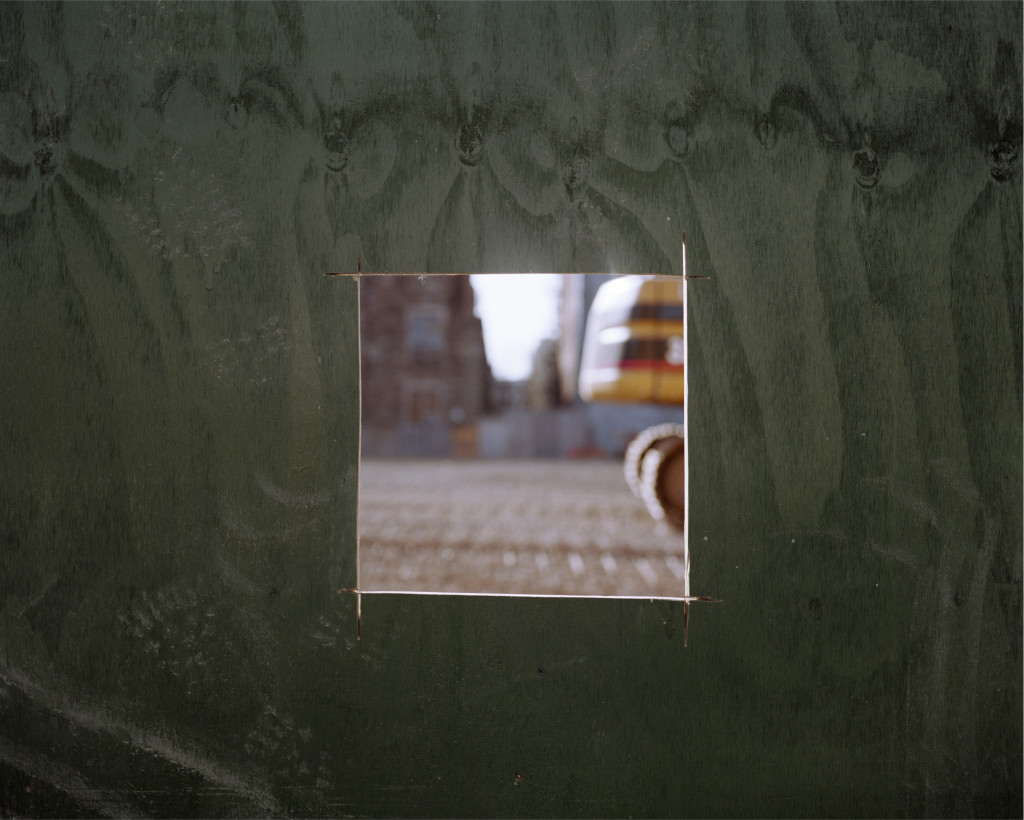
Throughout a career that has spanned over forty years, Dawoud Bey has continuously redefined the photographic portrait—from his early black-and white images of the faces of Harlem, to large-scale color Polaroids of urban youth, to symbolic portraits commemorating the young lives lost in the 1963 bombing of a church in Birmingham, Alabama. Whether working on the street, in the studio, or in residence with communities, Bey imbues his subjects with a psychological presence, while also challenging the formal traditions of photographic representation. In his most recent series, the human subject gives way to landscapes, both real and imagined, inhabited by narratives that speak to significant moments in African-American history. For Harlem Redux (2014-16), recently shown alongside selections from Harlem, USA (1975-79) at the Kalamazoo Institute of Arts, Bey captures the social and spatial transformations happening in Harlem as a result of the gentrification that has also erased the remaining vestiges of this historic Black community’s cultural life. In his upcoming project for Front International: Cleveland Triennial for Contemporary Art, Bey explores the history of the Underground Railroad in Cleveland through a photographic installation of dark landscapes that reimagine the passage of fugitive slaves. I met with Bey, a recent recipient of the MacArthur Genius Grant, to discuss the role of memory and history in both bodies of work. The following interview has been edited for length.
Susan Snodgrass: You have had a prolific career, and while there is certainly a lot of work that we could discuss, I want to focus on your more recent projects, beginning with Harlem Redux (2014–16). It is, in essence, a return to the site and subject matter of Harlem, USA (1975–79), your first photographic series that marked the beginning of your career. However here, we see a shift from portraits of people to a portrait of place, from the interior life of the subject to an external view. What was the impetus for this series?
Dawoud Bey: Harlem is at the beginning of my personal narrative; my mother and father met there. Even though I never lived there, I have a deep historical and emotional connection to the place.
I had been, of course, in between the early Harlem, USA work, which I began over forty years ago, visiting Harlem periodically over that time. One of the things that I began to think about was the fact that Harlem has undergone several waves of gentrification, with this current wave being the most transformative in terms of radically reshaping that community. I wanted to, really needed to, make some work about what that change looks like. And to do so as it is happening, as a community begins to take on a different appearance— demographically, physically, socially—due to the forces of global capitalism and social engineering, as they play out on a local level.
SS: You talk about witnessing this gradual change happening in Harlem over the years, yet it seems that there was some profound moment of transition that led you to want to make this work.
DB: The change had become more concentrated, more accelerated, and much more conspicuously visible, even though it has clearly happened in stages. The challenge was to find some photographic language that I could attach to this notion of change, absence, loss and memory. How does one visualize that? I did not want to make contemporary portraits of Harlem. I did not want to make portraits of the changing demographic, because I was acutely interested in the way the space around the subject would be transformed; the way the place itself has taken on a radically different appearance.
SS: For the earlier Harlem, USA series, you spent a lot time walking around the neighborhood, photographing people you met through chance encounters on the street. In this new series, you seem to use a lot of framing devices, looking through windows, looking through fences. There also seems to be more emphasis on geometry and patterning. In other words, these images appear more composed.
DB: They are specific pieces of information that are part of a larger narrative, trying to reveal, or get underneath, the meaning of these very particular sets of shifting relationships that were taking place within the geography, or the topography, of the neighborhood. Empty lots showing up where something used to be. If that happens increasingly, there is this rather disturbing loss of ‘place memory.’ Things disappear, and after a time, you cannot remember what used to be there. For me, there is something profoundly tragic about that. You have these two populations coexisting in a space—a population that knew, and a population that never knew; for them, this is normal, and for the population that has been there, pieces of the lives that they have known are disappearing. Again, the challenge was how to find a conceptual and then a formal language to talk about that. It took me about a year to figure it out, which was not an easy transition.
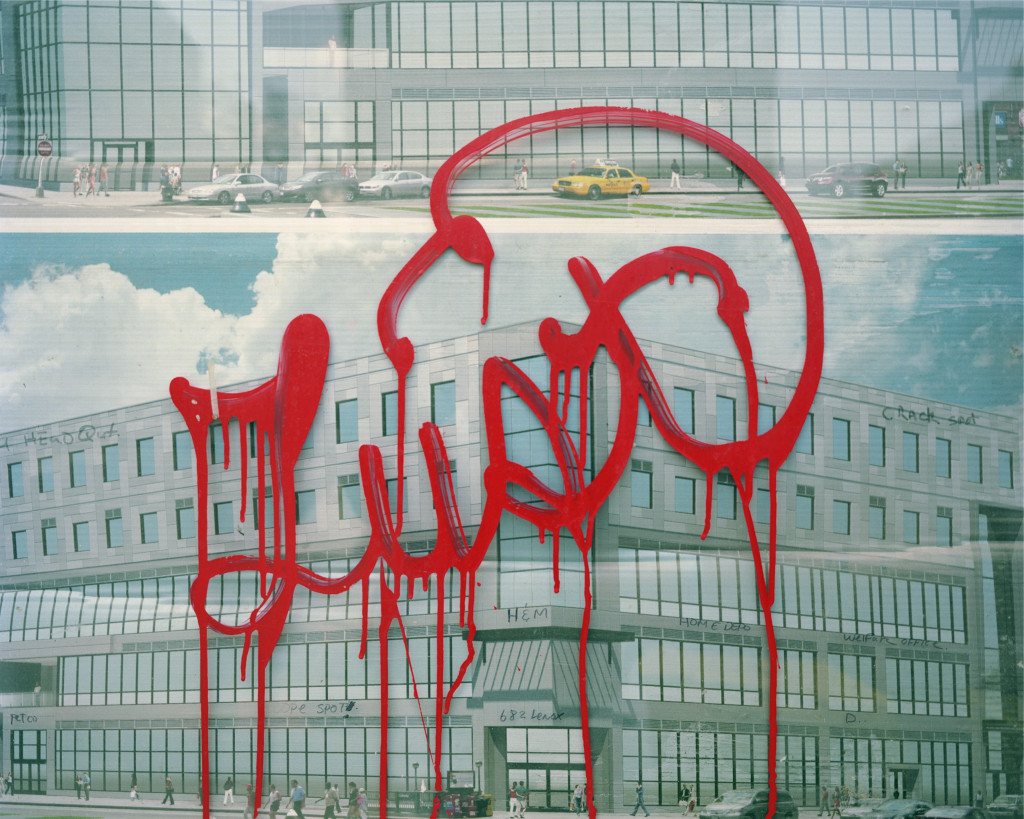
SS: Although this work comes from a very personal place, it seems to be as much about collective memory as it is about personal memory. Did you spend any time talking to other people in Harlem about the changes happening in the neighborhood? Or was this more of a solitary quest?
DB: It was a pretty solitary kind of project. For example, there is a photograph that I made on 125th Street and 5th Avenue. It was a corner that I knew well, right across the street from where the original Studio Museum in Harlem used to be. I was trying to remember the name of the restaurant on that corner. So, I am looking around, and I do not see anyone remotely old enough to have known what was on that vacant lot, let alone the name of the restaurant. The one person that looked like they might be of a certain age, when I asked them, had no idea what I was talking about. So, there was this challenge of making work about memory, in a place where that collective memory, to a certain extent, no longer exists.
Also, it was not really necessary to have those conversations in order to shape the work, because I had been keeping up with some of the changes. When I read that the Renaissance Ballroom, a well-known landmark in Harlem, was about to be demolished, I wanted to get back to Harlem in time to make a photograph of whatever I found at that point. I could not preordain what the photographs were going to be—I just had to put myself in the situation, and then respond by making a photograph that had some kind of resonant form, and some kind of meaningful narrative embedded in that form.
SS: And so you employed these framing devices. And in the Renaissance Ballroom photograph, the actual landscape is out of focus.
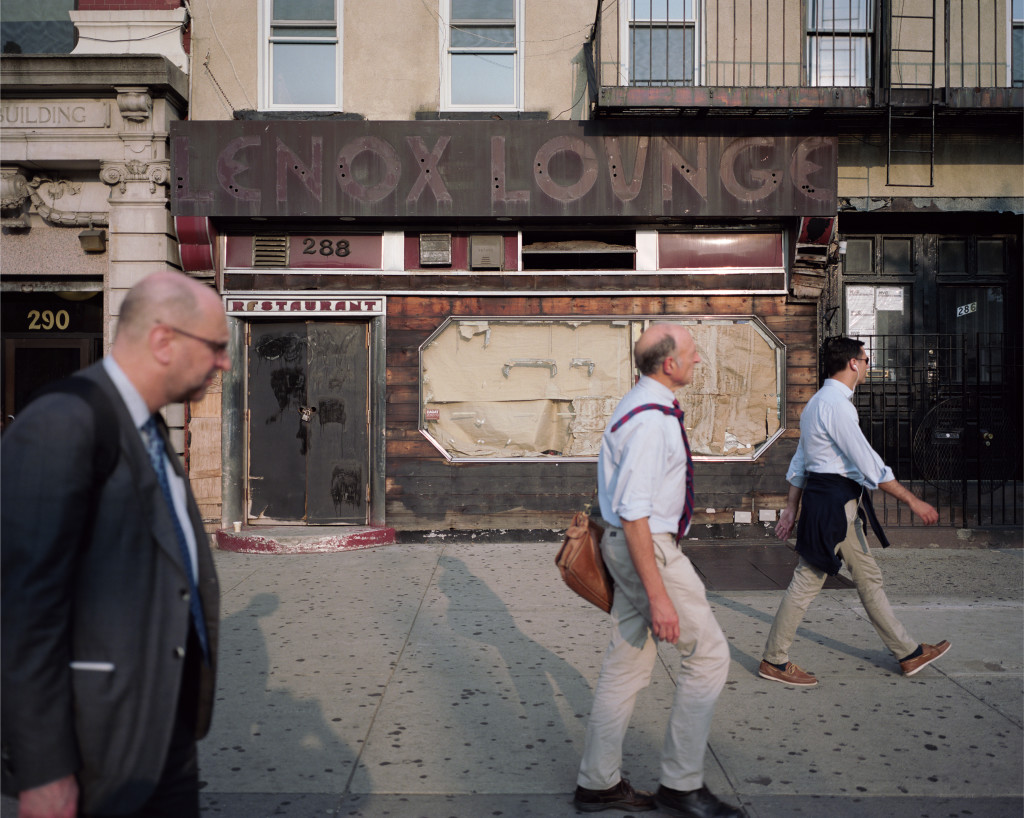
DB: Yes. I am conceptually less interested in this kind of ‘reveal-all’ picture, than I am in just giving the viewer a particular piece of it. The emptiness of that site, framed by this construction barricade. There is also a very subjective kind of opticality at work in these pictures, meaning that I am trying to attach not only a conceptual and formal language to these changing circumstances, but also a heightened optical quality of description to this notion of the disappearing. How do you do that photographically, because photography is inherently about describing what is there?
SS: The idea that this is an image of a particular place becomes less important than creating a portrait about loss and memory. The impact of social engineering and gentrification you mentioned earlier is also happening in other urban spaces.
DB: And because my attachment is to Harlem, I can speak about those circumstances to this place.
SS: Do you see this as an archival project?
DB: The work functions in multiple ways. Certainly, it is about this particular moment in this community, so there is a documentary aspect to it. It is also an entirely subjective telling of that moment through the visual poetics of the photograph.
As in the photographs of the Lenox Lounge, once a significant cultural gathering place in Harlem where a lot of well-known jazz musicians once performed. I wanted to get inside of the situation, to describe it materially, to describe it formally, to create an interesting form that also has a compelling narrative. I wanted to enact my own subjectivity on the subject matter, without losing sight of what’s important here. The three photographs that I made of that site over a few years is probably one of the most extended looks at a place that I made. The Lenox Lounge is now gone. Instead, there is a four-story Sephora Cosmetic store going up in its place. And that is the nature of change. People shopping at a Sephora on the site of a club where Miles Davis performed in 1954.
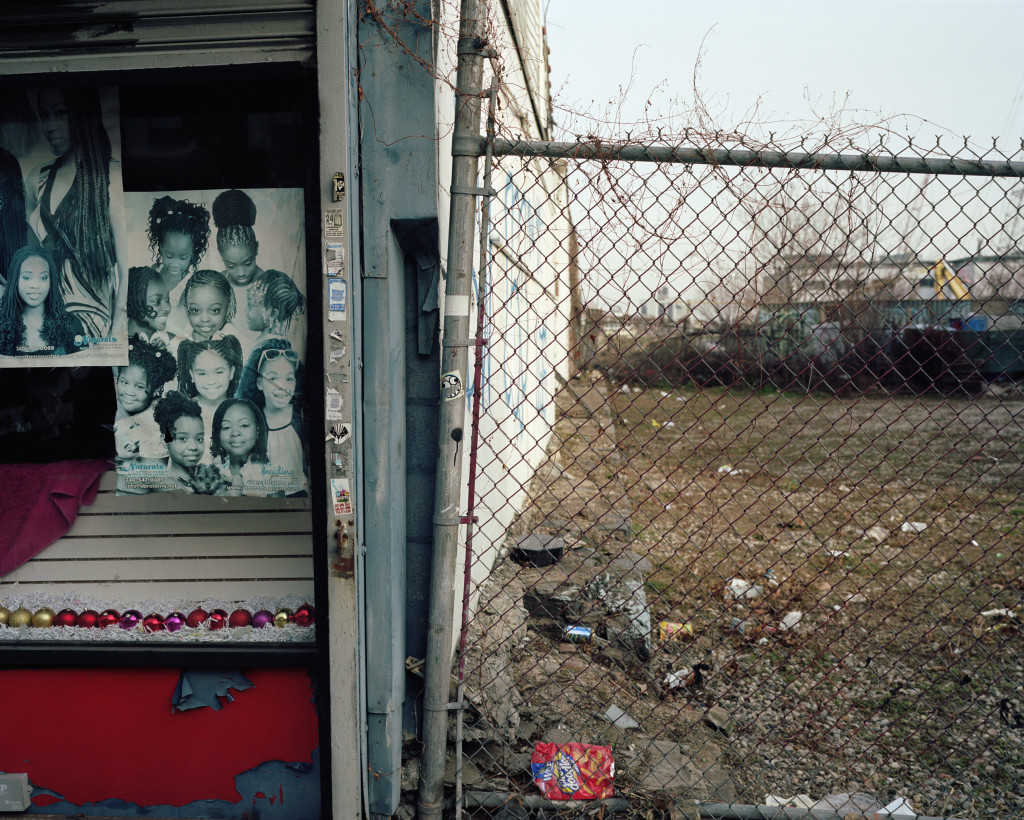
SS: Related to the subject of memory, tell me about your upcoming project for Front International opening in Cleveland this summer. Here you are also working with landscapes, however unlike the urban landscapes of Harlem Redux, these landscapes are imagined, although they are based on real historical events.
DB: Actually, it was The Birmingham Project (2012) that really got me thinking about history and about this idea of visualizing place. How does one make history visible and resonant in the contemporary moment? This series is based on, but not beholden to, the history of the Underground Railroad in Cleveland. So, in that sense, it is no more a documentary project than the Harlem work is. And again, the work is driven by my own subjectivities.
SS: How did the Front commission come about?
DB: Fred Bidwell, who is now the Director of Front, approached me a few years ago about creating some work in Cleveland. I started doing some research and discovered Cleveland’s unique place in the history of the Underground Railroad. We continued our conversation and then the triennial provided a structure. Because Front is going to be situated in both traditional institutional settings as well as non-traditional settings, they asked me to think about making work for St. John’s Episcopal Church, the last socalled station on the Underground Railroad that fugitive slaves would stop at before making the passage across Lake Erie to Canada.
At first, I was kind of pushing back because I am basically a white-box artist, one who makes work about things that are entirely non-white box, in order to bring that work and piece of the world into the white-box conversation. So, I went and looked at the church, and ultimately came up with this idea about doing an installation of photographs in the pews. I started to think about it as this dark landscape that one would encounter upon entering the church, which you would then have to get closer to and stand in the pews in order to discover exactly what was in the photograph.
SS: You have worked in black and white before, but these images have an atmospheric quality that harkens back to nineteenth-century Pictorialism. Is it the silver-print process?
DB: I have worked in black and white, but not with this kind of intention. The silver prints definitely approximate more the material and object quality because the image sits in the silver halide particles of the paper. The experience actually has even more of the illusion of physical depth, as opposed to ink that sits on the surface. I am pushing a lot of things to the limit materially with this work. And part of what the Pictorialist work was about was a manipulation of the conventional photographic materials, in order to create a more materially expressive photographic object, which I am also engaging with here.
I did not want to go there and make some large-scale, brightly lit color photographs. That seemed entirely contrary to the narrative of the Underground Railroad experience. I wanted to make photographs that embodied, spatially and materially, the experience of fugitive slaves moving through the darkness of the landscape in the nineteenth century. This also led me back to Roy DeCarava’s work, these very dark photographs, with the African- American subject emerging through and out of the darkness of the photographic space. So, what I am doing here is wrapping this narrative of the Underground Railroad and this notion of nighttime passage around this material conversation with DeCarava’s photographs.
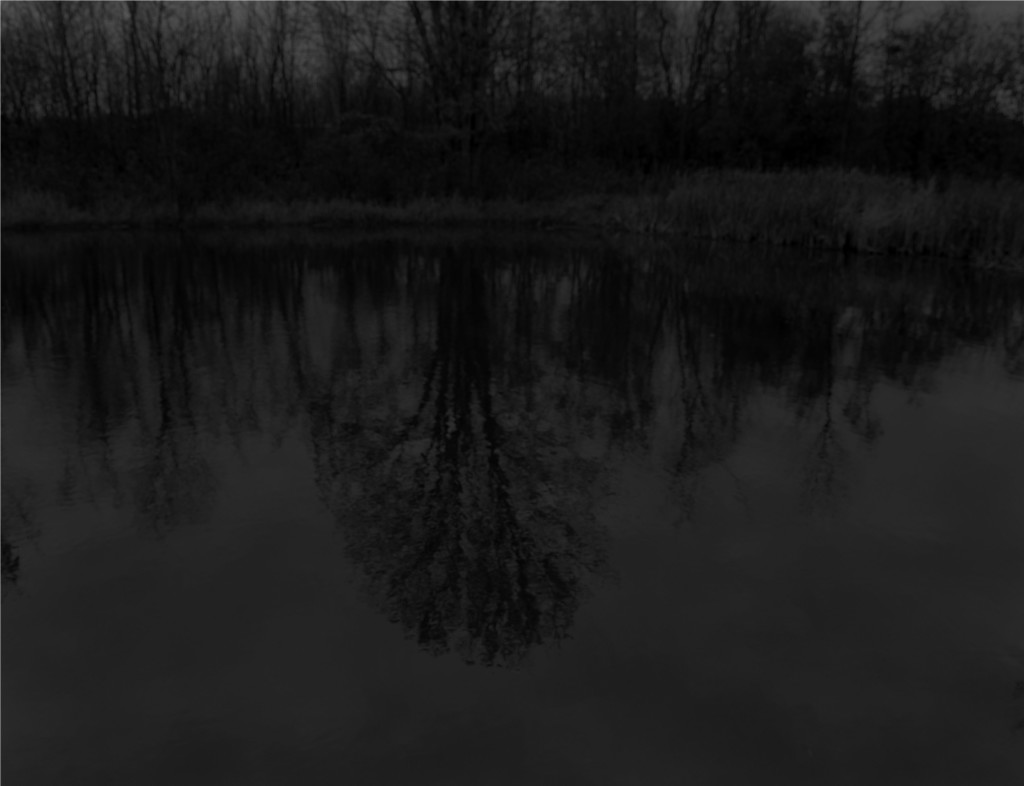
SS: Tell me about the title of this project, Night Coming Tenderly, Black.
DB: It refers to the final line of Langston Hughes’ poem Dream Variations: “Night coming tenderly / Black like me.” This notion that blackness can be a nuanced experience, that it can be tender, that it can be this space of liberation through which one moves. The title is a way of alluding to that, and to a more complex notion of blackness.
SS: I see connections here to The Birmingham Project, in that both bodies of work materialize moments in African-American history, particularly around historical trauma, while also occupying a nebulous space between fact and fiction. Can you speak to that?
DB: Conceptually, they are very much related. I am trying to make an object that alludes to the past and the present, simultaneously. Some of these sites are actually a part of the narrative of the Underground Railroad. Although, I quickly found out, as I did after spending a lot of time in Birmingham, there is real history and there is mythic history. And sometimes, the mythic has a way over time of morphing into the real. Most of what passes for history with the Underground Railroad is actually mythic history. Especially in Cleveland, where there is very little remaining material evidence of that. This led me to Hudson, Ohio, which was part of the route into Cleveland and where a lot of the physical evidence is still intact. For example, John Brown’s Tannery House is still there. That is why this work is as much a reimagining of the landscape of the Underground Railroad. Some of the locations are fact based, others are not, or could have been. It is in Cleveland; it is in Hudson. But the specific sites matter less than what I can make of them visually, especially since The Underground Railroad itself was not a publicly known entity; it depended on for its success the sustained secrecy of the various safe houses, and the secret movement through the landscape.
SS: To make this kind of work you need to embed yourself within the physical and geographic spaces you are photographing. Embedding yourself in Harlem was perhaps easier because it is a place you know intimately. I am sure you have done several site visits to Cleveland, but how do you psychologically get into that space?
DB: It is all about continually applying the narrative to the viewing experience and imagining the experience of a fugitive slave moving through this landscape, and then making the work with a clear sense of positionality in relation to the human body. Being mindful that the final images will be large and have a physical presence (48 x 54 inches), it will be enveloping in scale, but a very specific kind of material and physical darkness. It is dark, but you can see things, you can feel things. There is information there…however, the ultimate shaping of the experience is entirely mine, and done through the camera and the material. That has always been true. I think with this work, these subjectivities come even more to the fore.
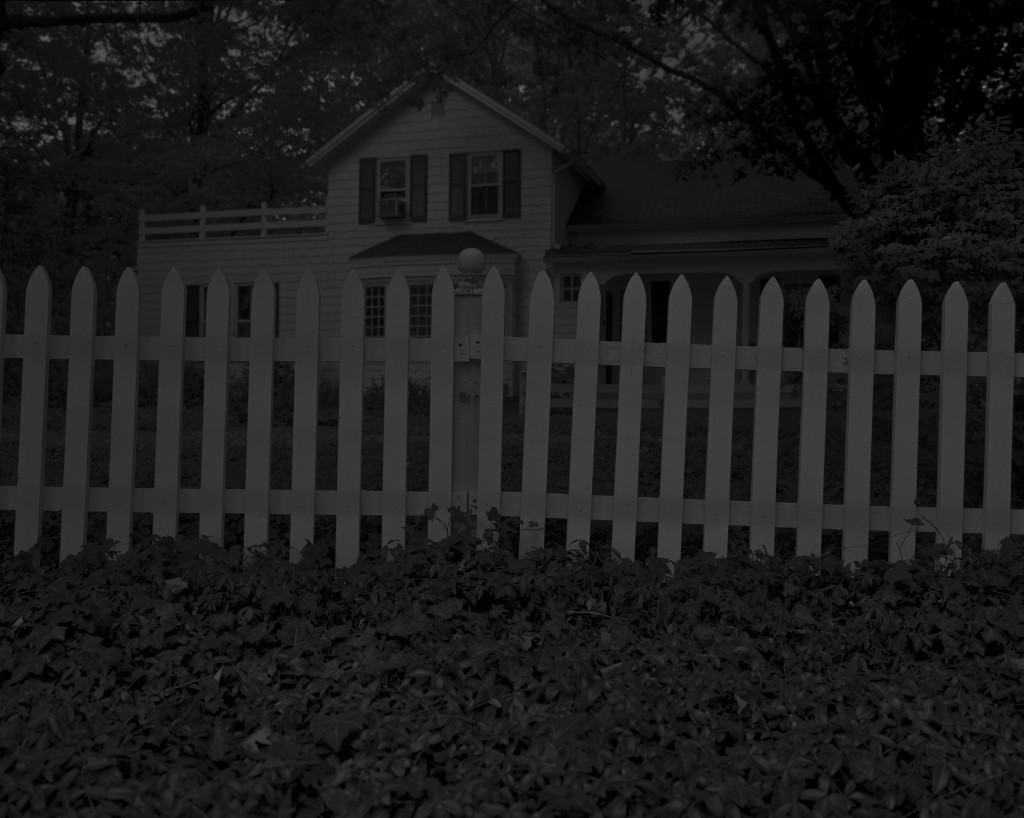
SS: Your monograph Seeing Deeply (University of Texas Press) is due out later this year, and in 2020 your retrospective survey opens at SFMOMA. I am sure both these projects force you to reflect on the whole of your career. Are you seeing the trajectory of your work in a different light?
DB: One thing that working on the book made me realize is that my work has always been about the variably intersecting relationships between the human subject and the physical spaces that they inhabit. There are so many things going on at one time; sometimes more about the person, sometimes the space itself. Obviously, I am excited about all of the previous work, and the ability to gather it all together, but right now I am mostly excited about what the Underground Railroad project begins to open up for me—particularly in terms of another way of thinking materially about the work that I make. Also continuing this notion of how to engage history, how to make the past resonate, in the contemporary moment, around some aspect of African-American history. Where that will take me, I do not know, but it gives me a big enough frame to operate within.
Front International: Cleveland Triennial for Contemporary Art will run from July 14–September 30, 2018.